How To Run A 3-Hour Marathon On 30 Minutes Of Training/Day
The internet is full of questions and forum discussions on sub-3 hour marathon training plans. How many miles per week to run a sub-3 hour marathon? What’s the minimum weekly mileage for a sub-3 marathon finish? What are some of the sub-3 hour marathon indicators?
While everyone’s experience is a little different, running a marathon under 3 hours is by any means a solid achievement. For many athletes it’s a milestone that they work towards for many years. After all, an athlete needs to maintain a ~4:15 min/km (6:50 min/mi) pace throughout the entire race to be able to break the three hour barrier. It doesn’t happen just like that – off the couch. An athlete needs to have a solid fitness base to be able to do that. And in most forum discussions people share that high mileage was the factor that helped them go sub-3.
I agree with the idea of increasing training volume to develop aerobic capacity needed to go faster for longer. However, this year I put that mileage question to the test. With everything going on in my life at the moment – family, a 1.5 year old son, day job, coaching and blogging all I could commit was 30 minutes of running on a daily basis. Committing to more than that would disrupt my daily schedule too much. So that’s what I did – run 30 minutes, 6 days per week. Sometimes more, sometimes (a little) less.
Short, but consistent runs had the best result on my fitness. I didn’t experience any pain or suffer from fatigue throughout the training process. During the race my form was good and I felt strong & relaxed. Up until the last two kilometres. In general, I ran better than any other marathon before, despite training much less than before. And, as a result, I enjoyed the entire process a lot more.
But I’m jumping a little ahead of myself. So, let me start from the beginning.
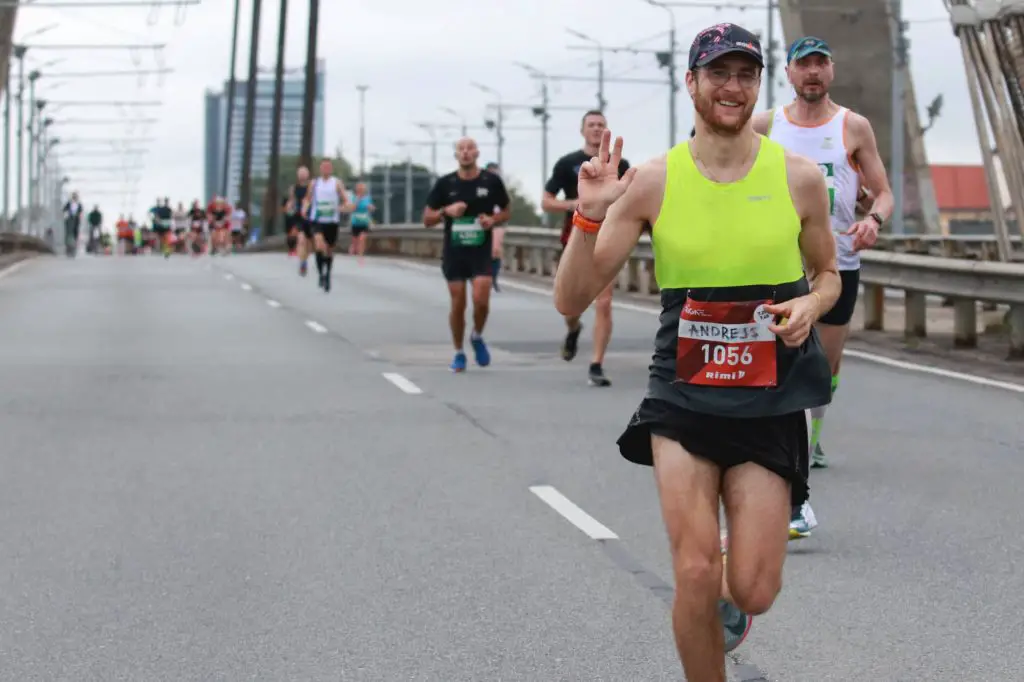
Running the Riga Marathon
Originally I planned to train for an autumn race as a stimulus to get back into structured exercise after a ‘slow’ winter of fatherhood, working, blogging and dealing with a few infections. In my view, committing to a race in autumn (organized or self-supported) would give me plenty of time to put in a solid aerobic base in spring and work on speed during summer. In fact, I shared the details about my marathon training master plan in this video.
Read also: How To Create A Marathon Training Plan From Scratch
But when I was on summer holiday back in my home country of Latvia, I learned that the timing of the Riga marathon this year was changed from its original date in mid-May to the end of August. That was exactly few days before I had a flight back home. So, I took it as a good sign and signed up with just a month left until the race.
It can be quite warm and sunny in Latvia at that time (it wasn’t), but I’m no stranger to a ‘warm’ marathon.
By that point of time I’ve done 3 months of consistent easy training (~150-200km per month) and was looking to improve my speed with some threshold work. So, instead of doing a focused speed block, I integrated it into my existing training.
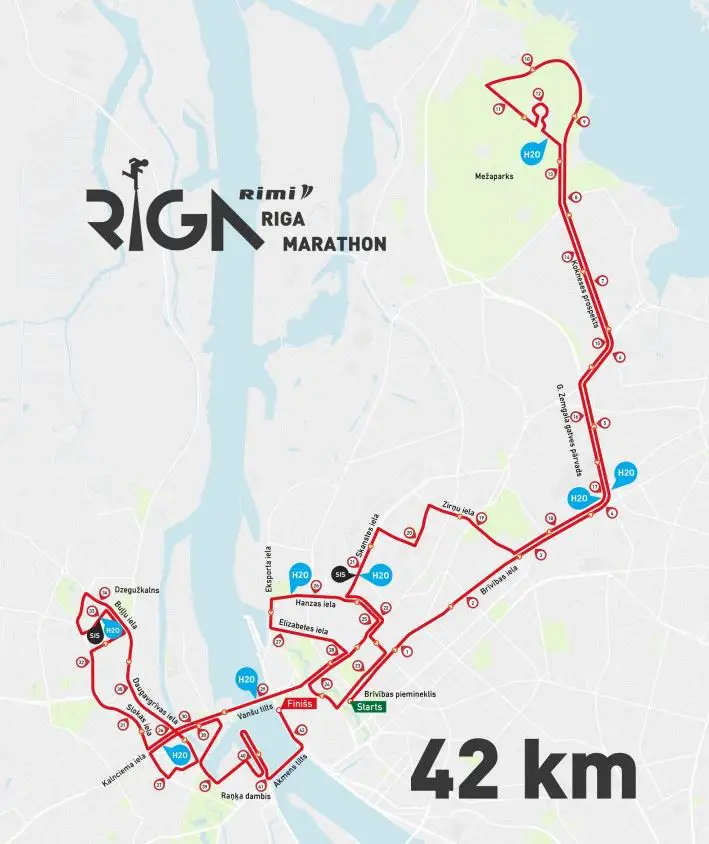
I was not planning to run a 3-hour marathon in Riga and approached it instead as a training race. With a mindset to be happy about any outcome my body would be capable of and enjoy the experience. And I sure did.
For me the result was secondary and I didn’t even do a proper taper for it. After all, what I though will be my main race (which in the end didn’t happen) was still months away. Also, at that point I was training for 30 minutes every day only, so there wasn’t much to taper from. Despite everything being less than optimal I’m surprised at how well I did.
Start – first 2K
Due to the coronavirus precautions there were 2 starts – green and yellow wave. I was sorted into the yellow one, which meant it wouldn’t be a mass start for me. Instead, it was a separate start 30 minutes after the main one – definitely a new experience for me.
There was no usual start rush and the whole process was super chill. I had a time range when I would need to cross the starting blocks (7:25am to 7:45am), so whenever I felt like it I could go. There were a few people who formed an organized line and waited for their turn to start. Some athletes started 2-3 people at a time (with 5 second gap). I waited a little to have nobody around me and then went to the start line.
It was a 100-meter-long corridor with fences on both sides and no spectators allowed. I had a very surreal feeling and the whole experience reminded me of the World Championships in kayaking when you’re essentially alone at the start (besides 8 other competitors) and all you have in front of you is a clear lane with finish line at the end.

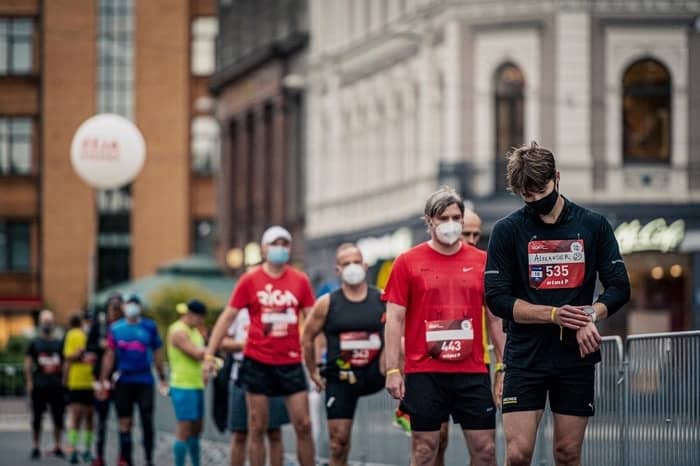
The first few kilometres of Riga marathon follow the main street (Brīvibas iela) that is usually busy with cars and buses rushing in both direction. That morning I was there all alone, putting one step in front of the other and catching other runners who started before me one by one.
In all my previous races the start was very hectic as everyone rushed to find the best position or group to follow. In fact, a sub-3 hour marathon group is quite competitive and athletes are chasing a personal best – for majority of them every second counts, even at the start. Which is why I always take the first few kilometres easy to allow the adrenaline to pass, the body to warm up and the mind to dial into the pace. Since there was no such thing this time I was able to remain calm and enjoy the experience to the fullest.
Easing into the race – 2K to 12K
At 7:30am there was nobody in the city. All of the spectators (apart from those who walked their dogs) were asleep and since I started 30 minutes after the main start there were very few fellow runners as well. It felt as if I was in the front pack and even leading the race. Something that I always imagine when thinking of running a city marathon.
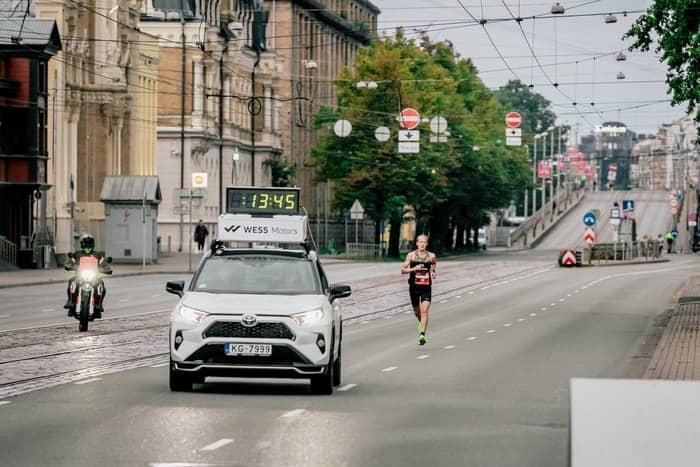
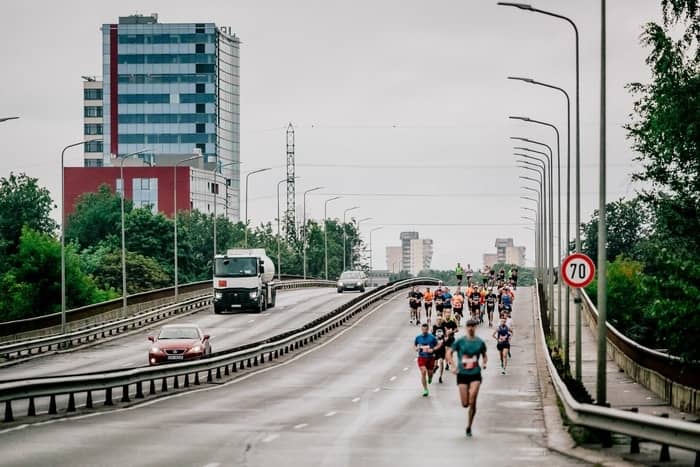
My previous personal best (3:07:08) at this point was in Berlin a few years ago. I trained for a sub-3 hour marathon that time and distinctly remember that in the first few kilometres I felt that my body was not ready for that. I couldn’t maintain the 4:15 min/km pace needed to go sub-3 at my marathon effort. This time, however, my heart rate was lower and the splits were in the 4:10 to 4:15 range on flat sections.
As I advise to athletes I’m coaching, I took the first 12k of the marathon easy. All of them were at least 7 beats below my planned average heart rate for the race (which was 165bpm). The reason for that is that throughout the distance the body fatigues and that results in the gradual heart rate increase. This effect is known as the cardiac drift.
To keep the same pace throughout the race and run the marathon as efficiently as possible, we need to incorporate that cardiac drift – start easy and gradually increase the effort.
Cruise control – 12K to 30K
By the time kilometre 12 rolled around I didn’t feel any sign of fatigue. I felt my form was the same as it was at the start and I could go like that forever. I knew, of course, that it’s a matter of time that my body will start to break, but so far those short daily runs were working great for me.
As I ran through the Riga’s largest park (Mežaparks) I got overtaken for the first time since the start. Up until now I was only catching people who started in front of me. But this guy looked very fresh and his pace was maybe 5 or 10 seconds quicker than mine. So, I followed him. He cheered on a guy that was running a marathon dressed in a suit and after a few hundred meters turned to me:
Is the pace ok for you? – he asked
It’s a few seconds faster than what I need, but all right. Thanks! – I replied as I got next to him and noticed he wasn’t wearing the marathon armband
You’re not in the race, aren’t you? – I asked
Nah, I’m just doing a 12K tempo session. Will join the race until the bridge and head back – he replied
We chatted for a few minutes and it turned out that he was Latvia’s #2 triathlete. He went out for a training session to immerse himself in the marathon atmosphere. And I can totally understand him – I enjoyed running a marathon through my hometown to the fullest. That’s kind of obvious from all the pictures.
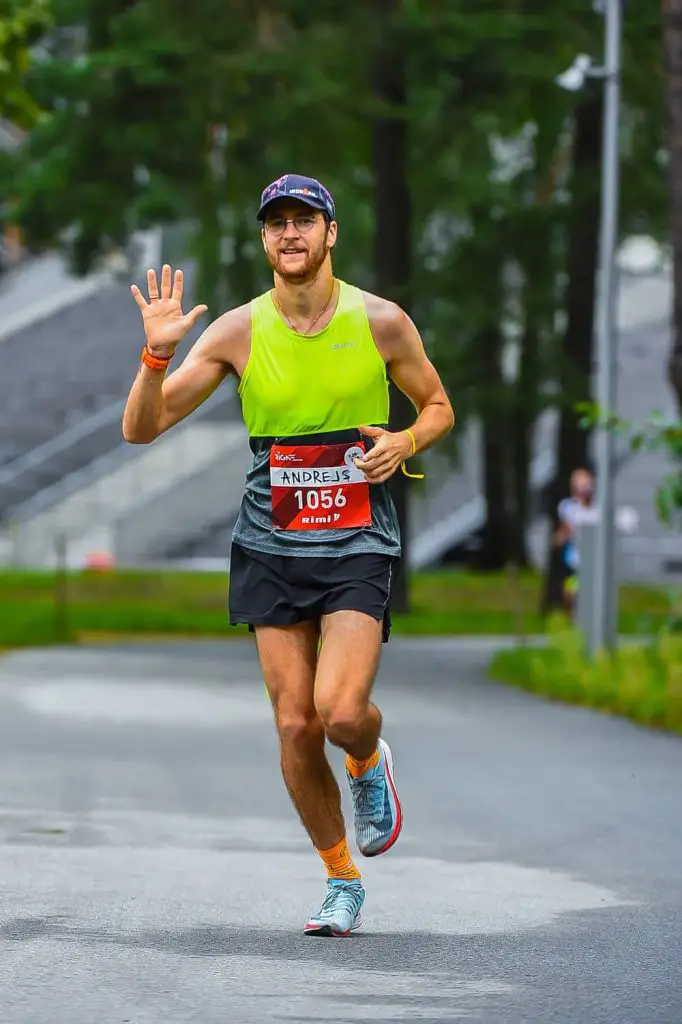
My heart rate jumped 5-7 beats during that conversation. However, as we parted ways (he needed a pace of 3:50 min/km for his tempo) it instantly came back. Another good sign. For the next 15K until I reached the Vanšu Bridge (the 30K mark) I felt in cruise control. I clocked every kilometre in 4:10 – 4:20 min/km, which was just what’s needed to run a sub 3-hour marathon.
At around 25K mark the marathon route merged with the half marathon race and all of a sudden it became very crowded and loud. That precious solitude I enjoyed so much was gone and was replaced with chatter and hundreds of footsteps hitting the ground instead. On top of that, since most of the spectators have woken up we were cheered as we ran through the center of Riga.
I was still overtaking people and looking for a clear path to run my own race. 25K is usually when I start to feel fatigue, so I was surprised at how easy those kilometres went by. I was expecting to slow down soon, which, to my surprise, didn’t happen.

The Resilient Athlete
A Self-Coaching Guide to Next Level Performance in Sports & Life
Are you aiming to become a resilient athlete who is able to withstand any pressure? Be able to jump on any opportunity? Take any challenge life throws at you head on?
Then this book is for you.
Learn morePowering through? – 30K to 35K
As I crossed the Vanšu Bridge I saw my family for the first time who came to see me run and cheer me on. We agreed beforehand that they would pick a spot somewhere in the last third of the race. Due to road closures the Eastern part of the city wasn’t easily accessible for them. It was a surprise for me as I didn’t expect them to be in that exact spot (at the end of the bridge). It was a much bigger surprise to my 1.5-year-old son to witness so much action and then his father stopping by to give a kiss.
30K is the actual halfway of the marathon. By this time you’ll know how the body handles fatigue and hunger. Often this is the point of the race when runners who didn’t fuel or pace themselves well will hit The Wall and will start to slow down. However, if you’ve been patient, now is the time to put more effort in – increase your heart rate by 5 beats.
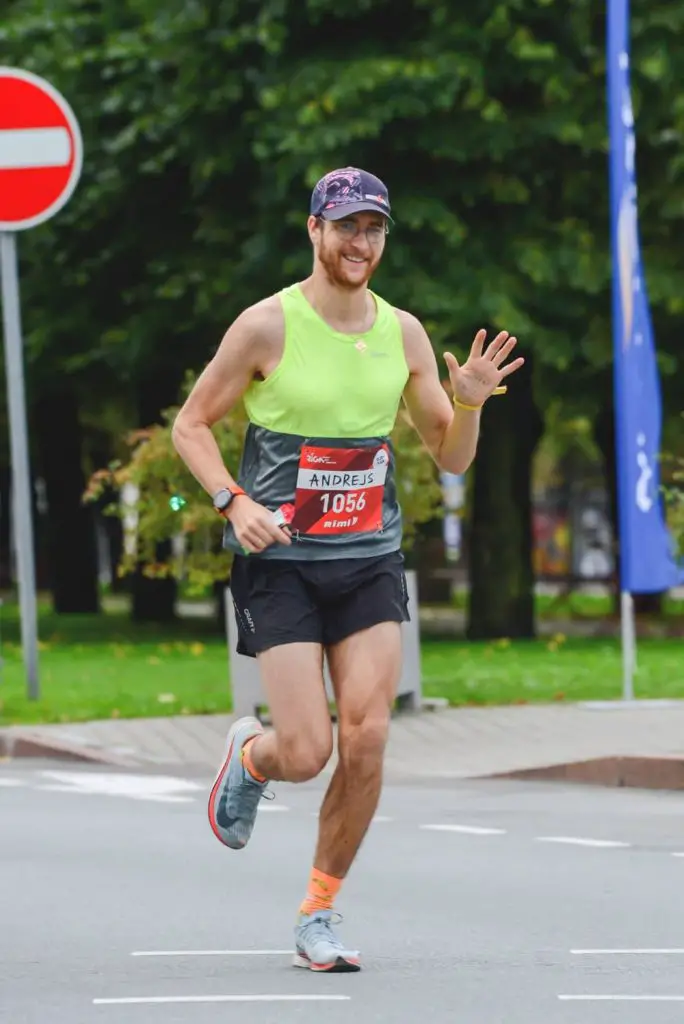
In all of my previous marathons I tried to hang on until the 37K mark to drink a caffeine gel and put the last effort in. But that was mostly because I was suffering in between 25K and 35K. This time it felt easy. My pace still hovered around 4:15 min/km and despite some tightness that was building up I felt I could maintain it. I was thinking whether a sub-3 hour marathon is still possible, but knew from experience that if I’m a little behind now, it probably won’t happen.
After I met my family and as I made the turn away from the bridge I noticed my heart rate jumped 7 beats from the average that I maintained so well for the past 2 hours. I decided to go with it. After all, the next 5K went through not the most spectacular part of Riga and focusing on pushing more helped to entertain the mind.
The kick – 37K to 40K
In the marathon if you’re still running at 37K, you’re doing it right.
Many people who have started experiencing first signs of fatigue at 30K mark might slow down to a walk in the last few kilometres of the race. For me, however, this is the essence and the best part of the race.
In a weird way challenge excites me. It’s that battle with the mind in the last 5K to keep going despite the pain that motivates me to sign up for the next race.
When I run a marathon I usually increase the heart rate by 5bpm at 32K, then another 5bpm at 37K and give it all for the last 2K. That’s almost what I did this time and up until 35K I felt pretty good.
Originally, I planned to take a caffeine gel at 37-38K to get the kick for the last few kilometres, but realized that breathing got harder and I wasn’t sure anymore how long I could maintain that effort. So, I drank the gel and waited for 2 more kilometres to flush it with water. Not the best option, but the water station was too far ahead. Luckily it didn’t make me sick.
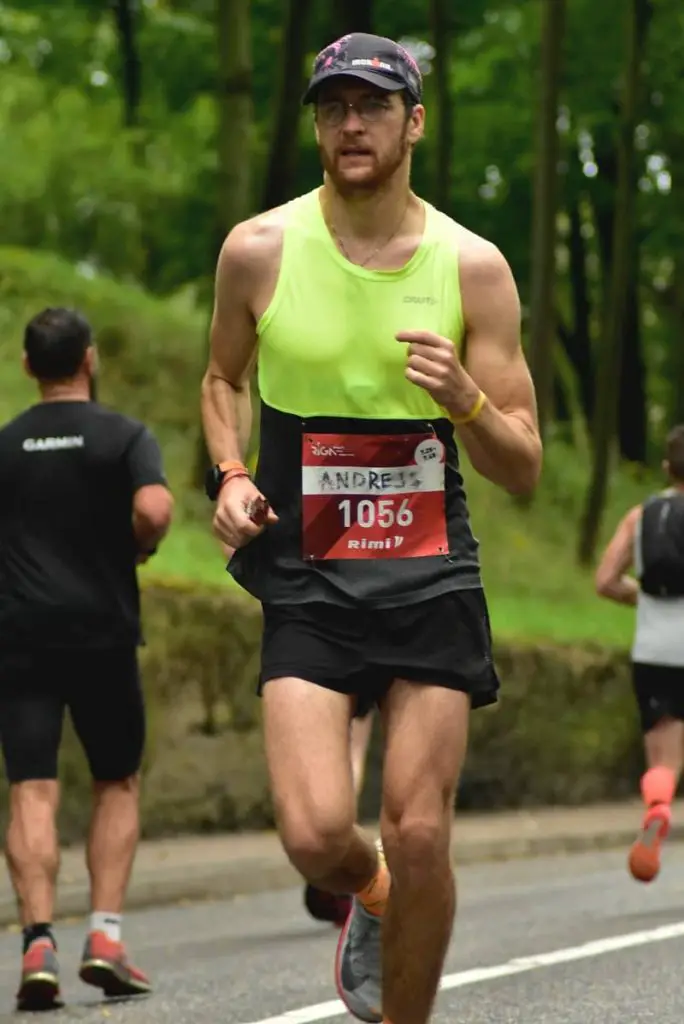
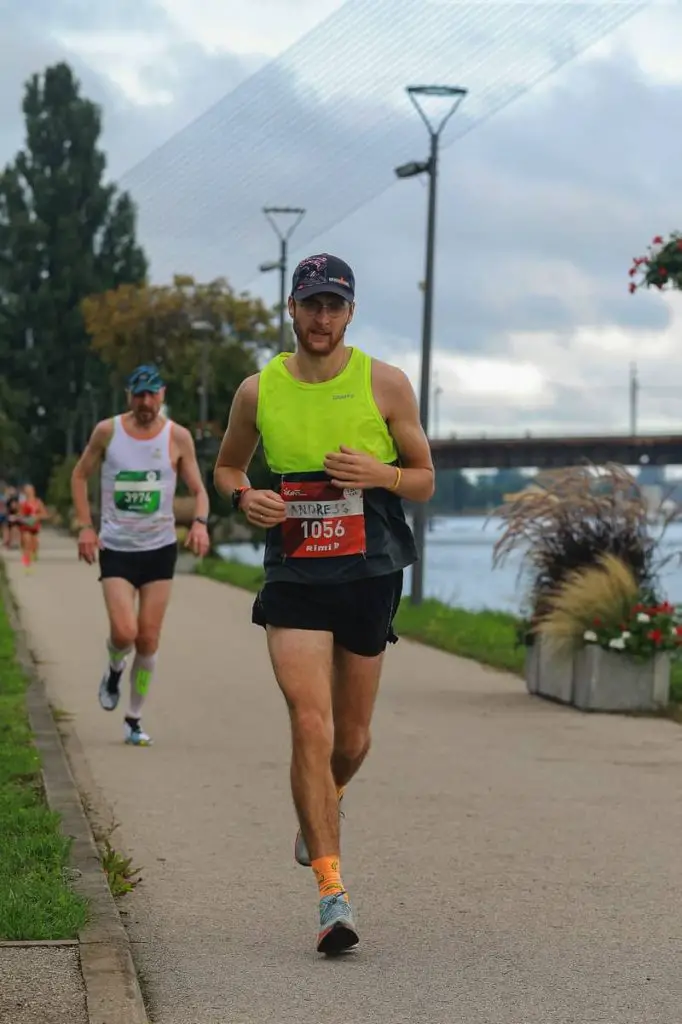
I did feel the caffeine kick, but as I got closer to 40K mark I also felt I was losing power and slowing down. Not that I was surprised – I was expecting that for the past 15K. It just meant I had fight ahead of me.
Finish – the last 2.195K
That fatigue hit me hard. Two runners overtook me and one even tapped me on the shoulder and said let’s go and push together. But I couldn’t push much and increase the pace. By the time it was 2K to go the pace dropped to 4:40 min/km, but it felt as if I was crawling at 6:00min/km.
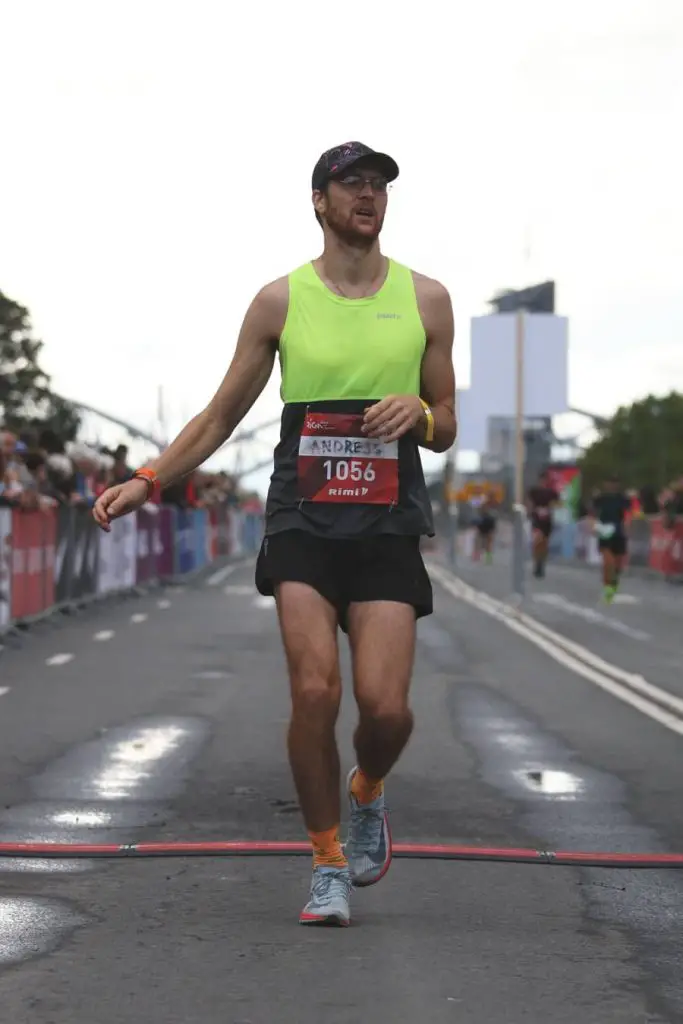
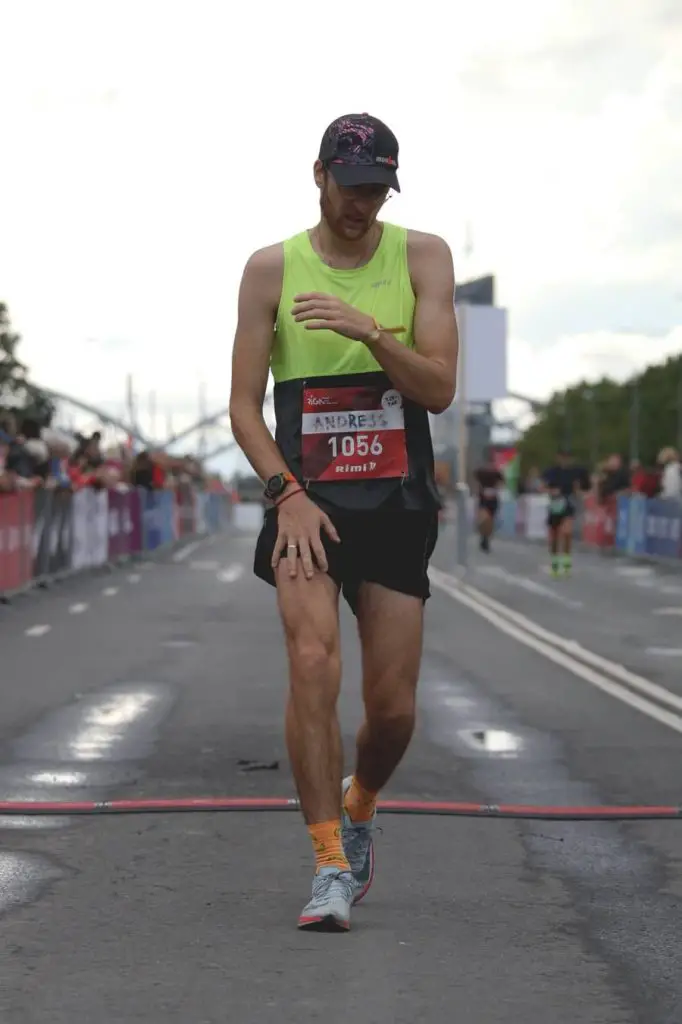
During my first marathon I noticed a sign that said “first 20K you run with your legs. Next 20K you run with your mind. The last 2.2K you run with your heart“. I think it perfectly sums up the way any marathon unfolds. If you’ve paced yourself correctly, by the time you’re at 40K mark you’ll feel pretty beaten up. But at that point of time it’s just 2K that’s left. This is the time to give it all you have left – the goal is to run across the finish line with nothing left in the tank. You might feel that you’re slowing down at this point, but as long as you’re not walking you’re ok.
My result = 3:03:09. That time placed me in the top 30 overall. And top 10 was less than 9 minutes away. Not too bad for 30 minutes of training per day. I consider that a great achievement
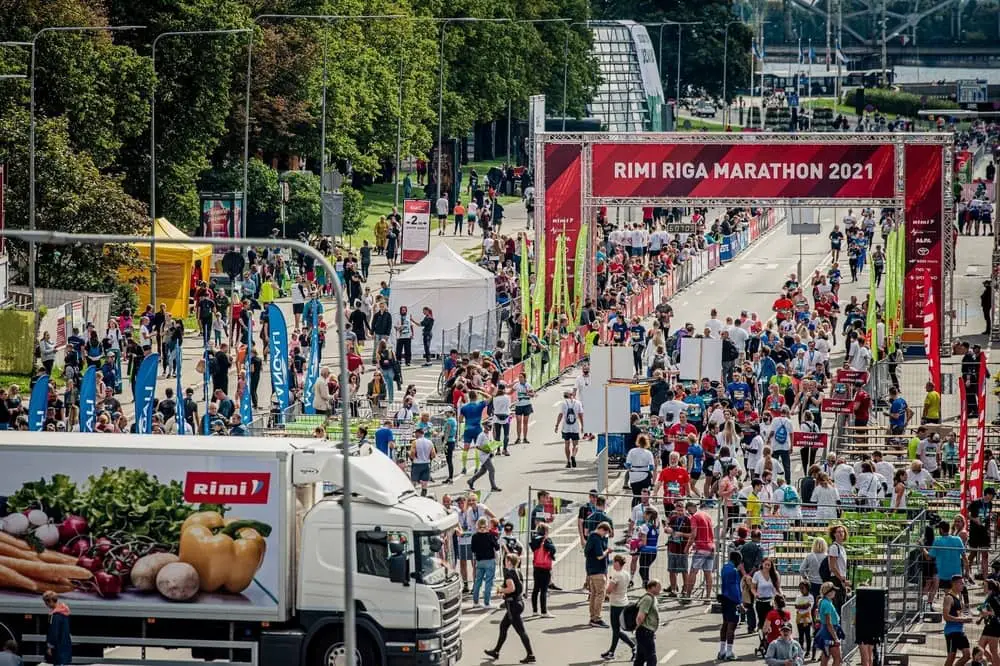
I managed to run the race pretty consistently with the first half in 1:30:36 and the second in 1:32:35. That difference mostly came in the last 3K when I started to struggle. It’s very visible in a more detailed split:
- First 10K: 43:19 (pace 4:20/km, 50 overall)
- Second 10K: 42:40 (pace 4:16/km, 46 overall)
- Third 10K: 42:47 (pace 4:17/km, 35 overall)
- Fourth 10K: 43:57 (pace 4:24/km, 27 overall)
- Last 2.2K: 10:26 (pace 4:45/km, 29 overall)
My training for the 3-hour marathon
This was the best marathon I’ve ran so far – both in terms of preparation and execution. And while I didn’t go sub-3 hours, with a little more Zone 4 training I’m sure I would have managed those last few kilometres (where I lost a couple of minutes) better. And, to be honest, with 30 minutes of training per week a 3:03 marathon feels as quite an achievement.
Some of the sub-3 hour marathon training plans call for 80 or even 100 kilometres (50-60 miles) of training per week. If we take a 5:00 min/km average pace that’s 16-20 hours of running every week. For a regular hobby-runner that can result in an injury. Especially, if volume is ramped up quickly. While volume does help to build aerobic base, there are methods to make low mileage more effective.
As mentioned, most of my training was very brief. A typical session was 25 to 40 minutes long and weekly volume ranged between 3 and 4 hours. So, how was a 3-hour marathon possible? And, more importantly, how you can optimize your training to improve your results? I attribute the outcome to 4 specific factors.
Frequency of training (+consistent movement)
Every week I had 6 running sessions and one full day of rest. Paired with lots of movement (15,000+ steps per day) that conditioned the body to operate for long stretches of time. That’s how at 30K mark I felt fresh and my stride was fluid. Daily stress conditioned my body, while short duration of sessions allowed me to recover quicker. That consistency created micro-adaptations and allowed to supercompensate on a consistent basis.
I’m generally pretty active. Throughout the year I train on average 3-5 hours every week (running, strength, etc.). That consistency helps to maintain a pretty good base fitness level.
‘Short’ but fast long run
During the entire prep I had only one run that was ~25K long. The remaining runs were around 16K, because there was a nice loop that started from my house. In the last 6 weeks before the race I occasionally added a second long run (if I had time) during the week, because my body recovered quickly from the workload. The program for that run was simple – 6K easy and 10K at marathon effort (low Zone 4 for me), which totalled to ~1:15 hours. Not much by marathon training standards.
However, when you run consistently (almost daily), the body will get more resilient and a run of 1.5 or even 2 hours might not provide a big training effect to move the fitness further. So, to do that a good practice is to add intensity and work on extending the time spent at marathon effort to simulate the demands of a race.
Read also: Marathon Long Run Variations – 5 Sessions To Boost Endurance Gains
High Zone 4 intervals
Running faster than marathon pace conditions the body to utilize more muscle fibres and grow mitochondria in them. That, in turn, makes these fibres more efficient and resistant to fatigue. In the month leading up to the race I added faster intervals to adapt the body a little more and make the marathon pace feel a little easier. Those intervals were usually four to six times 1K with short rest (started at 3min and finished at 1min the week of the race).
Mobility and core training
Some people run as much as 80K (50mi) per week and barely break the 3-hour marathon barrier. In the end, mileage alone doesn’t result in a fast marathon. That volume should be focused on quality – either improving endurance (a mix of low & moderate intensity) or speed (targeted high intensity). What matters most, however, is what an athlete does besides running.
When I look at the video of myself running at 31K, I can see that my form is as good as it is during training. I attribute that to the ‘supplementary training’ that I did. In particular, on almost daily basis I did a few exercises to maintain strength in stabilizing muscles across the body and a few variations of muscle release and mobility exercises to prevent accumulating fatigue. It totalled to probably 5 minutes per day, but allowed to keep muscles fresh, open and able to operate at full capacity.
Tags In
Andrejs
Related Posts
2 Comments
Leave a Reply Cancel reply
GET A FREE TRAINING PLAN
Subscribe to my email list and get access to a free 4-week “back in shape” training plan
You’ll also get two full-body strength sessions and some other goodies!

How did I get here?
Hey there! My name is Andrejs and I am here to inspire, entertain and get you fit for any adventure.
I went from being an over trained pro athlete to an endurance coach sharing how to listen to your body and live life to the fullest.
Traveling, new sports & activities brought new meaning to my training and made it much more effective, fun and enjoyable. And I'm here to help you do the same.
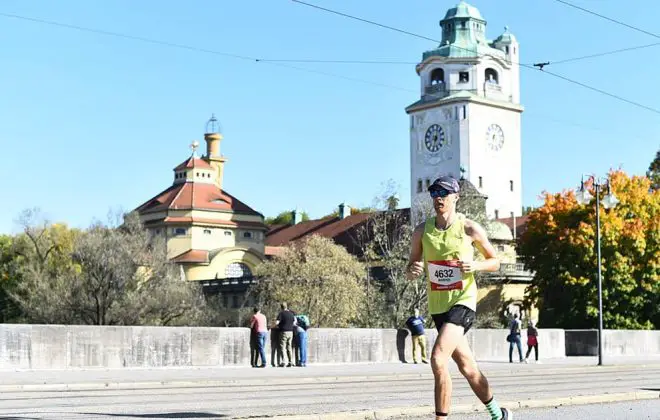
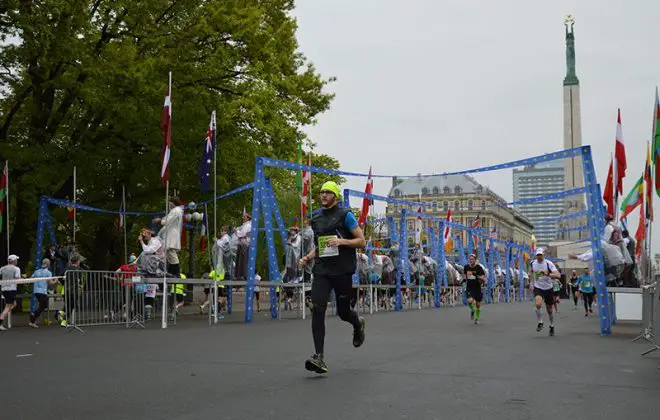

Thanks for this different view on marathon training! Interesting that it was born more out of necessity than out of deliberate planning 🙂 And congrats on that marathon time, maybe not sub-3 but still very impressive!
Hi, Appreciating the time and effort you put into your website and in depth information you offer. You’ve really covered up almost all the possible info that every marathon running enthusiast should follow who is so curious to run a 3hour marathon. Worth sharing! Please continue sharing your updates! Thanks a lot!